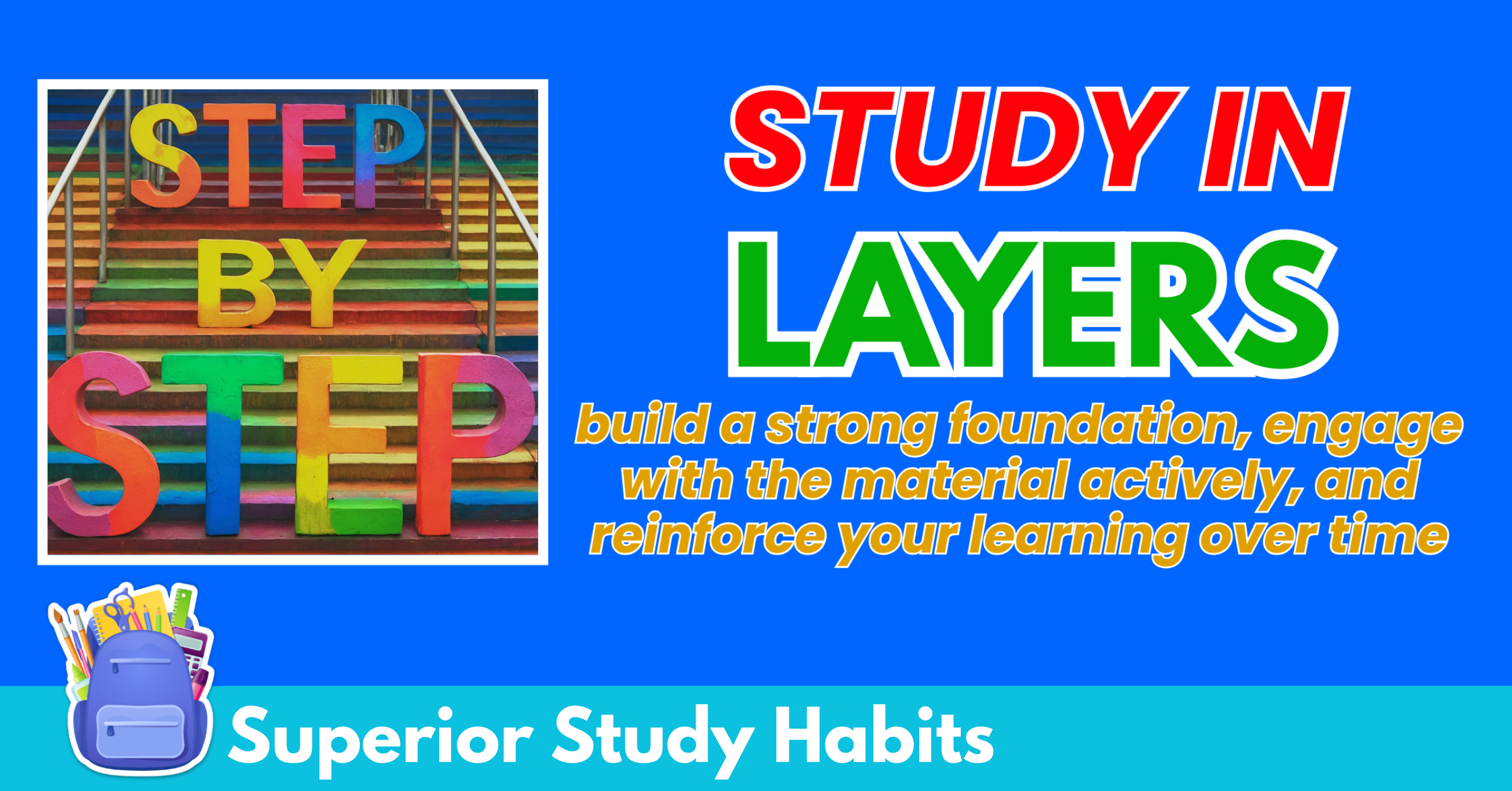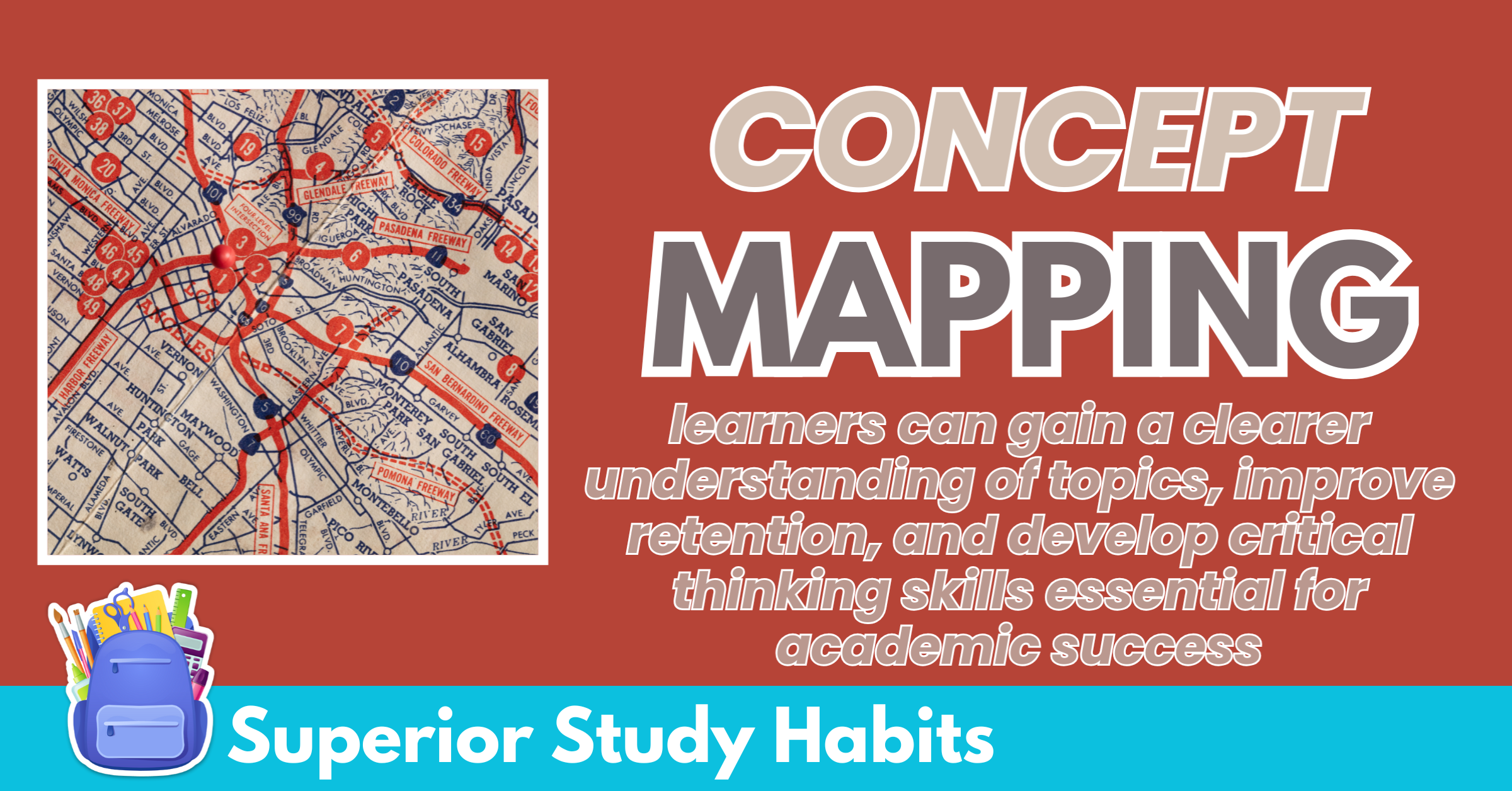7 Exuberant Benefits of Study in Layers Leading to Great School Performance
Benefits of study in layers – meaning, starting with basics then diving into details, is a highly effective study technique.
Discussed below are seven reasons why you should start using it right now.
Table of Contents
Why reading every detail is not most effective
When it comes to studying and reviewing, especially for an upcoming exam, many people tend to read every detail because each word can stick in their minds, particularly when memorizing enumerations.
However, a more effective approach is to start with the easier parts of the review before diving into the smaller details.
This is the idea behind “study in layers,” which emphasizes gradual learning. Begin with the most essential terms or concepts, such as chemistry, biology, or trigonometry, before moving on to the branches beneath them.
For example, in trigonometry, you might first understand the broader concepts, then learn the definitions of sine, cosine, and tangent, and finally explore the specific applications of these concepts in detail.
This method helps maintain logical progression in your study process.
Solid foundation before more complex topics
Starting with the basics allows you to establish a foundation that makes it easier to understand more complex topics.
Learning a subject layer by layer ensures that every new piece of information builds on something you already know.
In biology, for instance, understanding the fundamental terms like “cell” and “organism” provides the basis for diving deeper into processes like cell division or genetic inheritance.
Without a solid grasp of these basics, more advanced discussions may feel overwhelming. This step-by-step progression is the core principle of the “study in layers” approach.

Summaries serve as anchors
One of the key strategies in this method is to focus on summaries during your initial review.
Summaries condense information into its most essential points, helping you capture the bigger picture without getting bogged down in the details too soon.
For instance, when studying physics, you could start with a summary of Newton’s laws before exploring their mathematical representations or real-world applications.
These summaries act as anchors, helping you revisit and reinforce fundamental concepts before layering on additional knowledge.
Active learning
Another essential component of the “study in layers” method is active learning.
Instead of passively reading through material, engage with it by teaching the concepts to others or by applying them to simple problems.
For example, teaching someone the basic principles of photosynthesis helps solidify your understanding of the topic.
Once the basics are clear, you can expand your study to include the biochemical pathways involved, such as the light-dependent reactions and the Calvin cycle.
Active learning connects foundational knowledge with more advanced ideas, making the material more memorable.

Add Spaced Repetition
Spaced repetition is another powerful tool that complements this approach. By reviewing the same material at intervals, you reinforce your understanding while adding new layers of complexity.
For example, in geometry, you might first memorize the parts of a triangle and their definitions.
As you revisit the topic over time, you can progress to solving equations involving trigonometric identities or the Pythagorean theorem.
Spacing out your review sessions ensures that you retain foundational knowledge while continuously building upon it.
Reduces feeling of being overwhelmed
The logical progression of starting with the basics also reduces the feeling of being overwhelmed.
When faced with a large amount of material, it’s easy to feel lost or unsure of where to begin. By focusing first on broad concepts or essential definitions, you give yourself a clear starting point.
From there, you can gradually move into more detailed information, confident that you’re not missing anything important.
This organized method not only saves time but also boosts your confidence as you see your understanding grow layer by layer.
Critical thinking
Moreover, studying in layers trains your brain to think critically about the connections between different topics.
When you start with the basics, you develop a sense of how various ideas relate to each other.
For example, understanding the foundational principles of algebra helps you see how they apply to calculus or even physics problems.
This interconnected knowledge makes it easier to apply what you’ve learned in different contexts, which is especially useful for exams that test problem-solving and critical thinking skills.
Conclusion
Ultimately, the “study in layers” approach promotes a more effective and efficient learning process. By beginning with the basics and gradually working your way into details, you avoid the pitfalls of information overload.
This method allows you to build a strong foundation, engage with the material actively, and reinforce your learning over time.
Whether you’re tackling a new subject or preparing for a major exam, studying in layers ensures that you gain both a broad understanding and a deep mastery of the material.
“Start with the basics; build a strong foundation, and the details will naturally fall into place.”
Share This Story, Choose Your Platform!
School Hacks
Subscribe
Fresh insights and exclusive perks delivered straight to your inbox. Sign up now!







